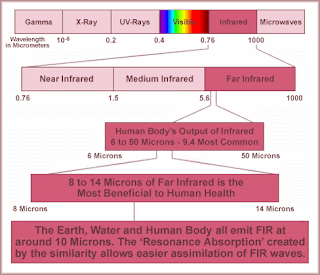What is Collagen?
Collagen means "glue producer". Kolla is Greek for glue.The most important building block in the entire animal world, collagen is the tie that binds the animal kingdom together.Life is a string of complex molecules: polymers.Nature's most abundant protein polymer is collagen.
More than a third of the body's protein is collagen.Collagen makes up 75% of our skin.Collagen controls cell shape and differentiation, migration, and the synthesis of a number of proteins.When the body needs to build any new cellular structure as in the healing process, collagen and/or collagen fragments will play a central role.
Skin Collagen
Collagen is very important for the skin. Indeed, it is the principal structural protein holding the skin together. The quantity and quality of our skin's collagen has a major role in our appearance. Therefore, it may be tempting to think that simply getting more collagen into the skin should lead to dramatic rejuvenating effects. While there is a grain of truth to that, things are more complicated than they look as far as collagen is concerned. Collagen is not like most proteins, which are essentially compact molecular clumps -- it is basically a fiber or, when filly mature, a mesh of fibers. Collagen’s composition is also unusual. It is particularly rich in four amino acids: lysine, proline, hydroxylysine and hydroxyproline.
The most common patterns in the amino acid sequence of collagen are lysine-hydroxylysine-proline and lysine-hydroxylysine-hydroxyproline. Types of CollagenCollagen is found in the majority of organs, not just the skin. It occurs in different forms known as types. Hence, it is not enough to have the right amount of collagen in the right place - it has to be the collagen of the right type.
Type I Collagen - The most abundant collagen in the body. Found in tendons, bones, skin and other tissues. Particularly abundant in the scar tissue.
Types II, IX, X, XI - Cartilage
Type III Collagen - Common in fast growing tissue, particularly at the early stages (Phase 1) of wound repair. Much of it is replaced later by the type stronger and tougher type I collagen.
Type IV - Basal lamina (filtration membrane of capillaries)
Type V, VI - Generally found alongside type I
Type VII - Epithelia (lining of GI tract, urinary tract, etc.)
Type VIII - Lining of blood vessels
Type XII - Found alongside and interacts with types I and IIIThe most abundant types of collagen in the skin are I and III; their fibrils form the mesh largely responsible for the skin's mechanical properties.
Other types of collagen in the skin are V, VI, and XII. They are found in much smaller amounts and appear to have a supportive role, whose details remain unclear.
Types of Collagen and the Aging Process
- Overall, the amount of collagen in the skin tends to decline with age. However, different types of collagen behave differently.
- In particular, a child's skin has a lot of collagen III, the type is common in fast growing tissues.
- The abundance of the type III collagen is partly responsible for the softness of the young skin. As the body growth slows down, the skin content of type III collagen declines, while that of type I increases. In fact, type I collagen continues to build up until about the age of 35, when the skin reaches the peak of its mechanical strength. After that, type I begins to decline as well. The dynamic of age-related changes in other collagen types remains unclear.
- However, we do know that by the age of 60, all types of collagen are significantly below their youthful levels. Understanding collagen types is important for a number of reasons.
- On the top of that different agents capable of stimulating collagen synthesis may affect different collagen types differently. Collagen Degradation Having a lot of collagen in our skin is not enough. Collagen degradation is an ongoing, natural process.
- Collagen is excessively damaged by a number of external factors like UV rays, smoking, impaired glucose metabolism, chlorinated water, free radicals, inflammation, irritation and others. Its structure becomes distorted, leading to poor skin texture, wrinkles and other imperfections. Most components of the skin, including collagen, undergo continuous turnover.
- New collagen is continually produced and recycled throughout life. At a younger age the synthesis of collagen predominates, whereas after about age of 40, the degradation of collagen picks up speed.
Therefore, to keep our skin's collagen in balance, after certain age you may benefit from steps to boost collagen synthesis and reduce its degradation. Considering that collagen type I and III are predominate in the skin, the agents and treatments shown to stimulate the synthesis of these types are particularly promising. One good example of such an agent is topical stabilized L-ascorbic acid (Vitamin C) and Marine Collagen whose capacity to stimulate both type I and III collagen has been shown in a number of studies. Pure Marine Collagen Selanitriol will help accelerate collagen synthesis and elastin collagen thickening, encourage skin renewal and reduce skin muscle contraction. Because of pure concentration, many women could see the results of skin elasticity and plumpness just over a night of application.






